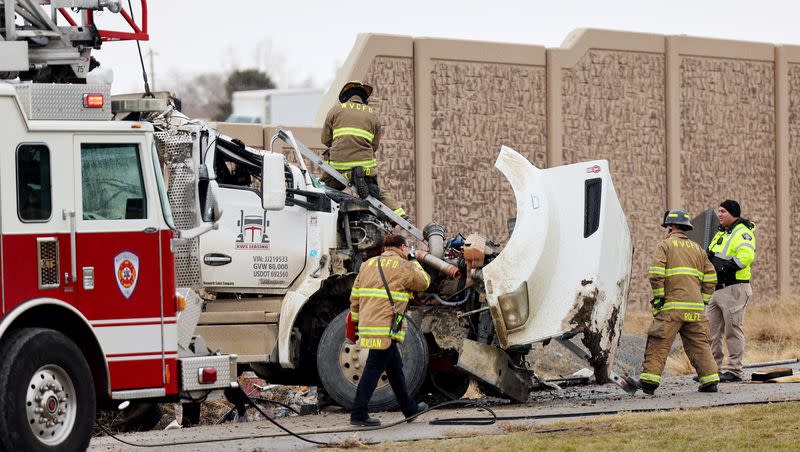Opinion: Highway deaths are down, but zero is the only acceptable number

In 2018, Utah saw a significant drop in fatal vehicle accidents after state lawmakers lowered the legal blood-alcohol limit to .05%, the lowest in the nation. At the time, the National Highway Traffic Safety Administration used this as validation for its nationwide campaign to get other states to also lower their legal limits.
Citing various studies, the NTSB has been on solid ground with this campaign. One study found that drivers with a .05% blood alcohol level were 1.38 times more likely to be in a crash than those who are sober.
But something happened during the pandemic that reversed the good trend in Utah, and that raised the number of fatal accidents nationwide. Not all of these were alcohol-related, but police are reporting many accidents involving substances of all kinds.
Recent news stories said Utah was approaching 200 fatal crashes for the year 2023. Those figures are outdated. Earlier this week, Utah Highway Patrol spokesman Sgt. Brian Peterson told us the latest figures show 206 fatal crashes in the state, resulting in 232 deaths.
A little perspective is in order. That figure is well below that of a year ago at this time, when the state had 253 fatal accidents resulting in 272 deaths. However, it is well above the pre-pandemic 2019 total of 175 accidents and 192 deaths.
Utah’s fatalities appear to be moderating, but they remain far above where they should, and could, be. And no one should celebrate the loss of 232 lives, or the 192 lost in 2019. Each number is a person who was loved by others. Society has become far too complacent and accepting of death on the nation’s roadways.
Utah has a Zero Fatalities campaign. To some, this may sound unrealistic. In reality, it is the only acceptable number.
The Utah Highway Patrol reports that October typically is a bad month for fatal accidents. Peterson said there are many reasons for this. Children go to and from school in the dark, while many take advantage of good weather by playing outside past sundown. Halloween naturally leads to many children walking the streets after dark, but it also leads to parties involving adults and alcohol.
Things don’t get any easier when the daylight saving time ends on Nov. 5 and people set their clocks back an hour. Mornings get lighter, but the evening commute gets darker.
Back when Utah first passed its .05% blood-alcohol limit, some groups came out in fierce opposition. The American Beverage Institute bought a newspaper ad implying the state would lose tourism, warning out-of-state visitors that social drinkers would be arrested. Other critics said it would be difficult for moderate drinkers to know when they crossed the limit.
First, the tourism effects didn’t happen. In 2022, the industry generated nearly $12 billion in tourist spending, a record. After the new law took effect, the state studied 35 million social media posts about Utah and how people felt about visiting the state. Vicki Varela, managing director of the Utah Office of Tourism, said in an email, “We were pleased that our brew pubs got rave reviews. We got very high ratings for locally crafted beers. Lots of posts of people enjoying a beer, and comments about great atmosphere, nightlife, etc., in Salt Lake and Ogden.
“There were very few posts about .05 or other liquor laws.”
As to a drinker’s confusion over reaching the limit, that is a good thing. A positive byproduct of the .05% limit is that it fosters a culture that separates the act of drinking alcohol from the act of driving. Drinkers become more aware that the consumption of any alcoholic beverage should disqualify them from getting behind the wheel.
As Peterson told us, people ought to get in the habit of deciding on alternative forms of transportation before they drink. If you live along the Wasatch Front, plenty of those alternatives exist, from summoning an Uber or a cab to taking TRAX or FrontRunner, to calling a friend.
Beyond that, people simply need to be aware of their surroundings, and to drive a little slower. The pandemic gave rise to an inexplicable epidemic of reckless driving. Nationally, fatalities rose from 10.99 per 100,000 people in 2019 to 12.89 in 2021.
Those figures, like Utah’s fatal accident numbers, have moderated some, but they remain way too high.
Authorities say the overwhelming majority of these are preventable. Each individual driver has a duty to do something about that.

